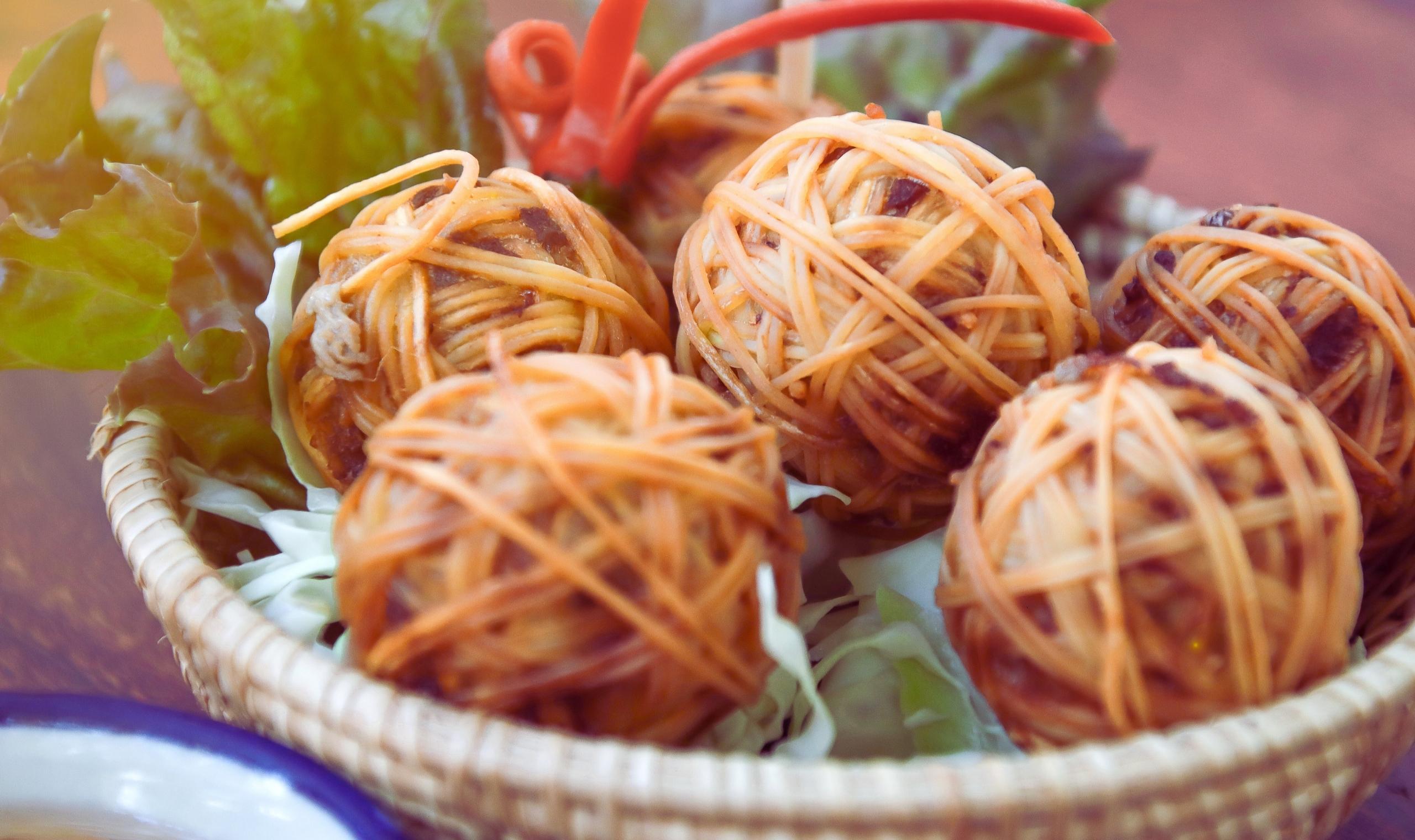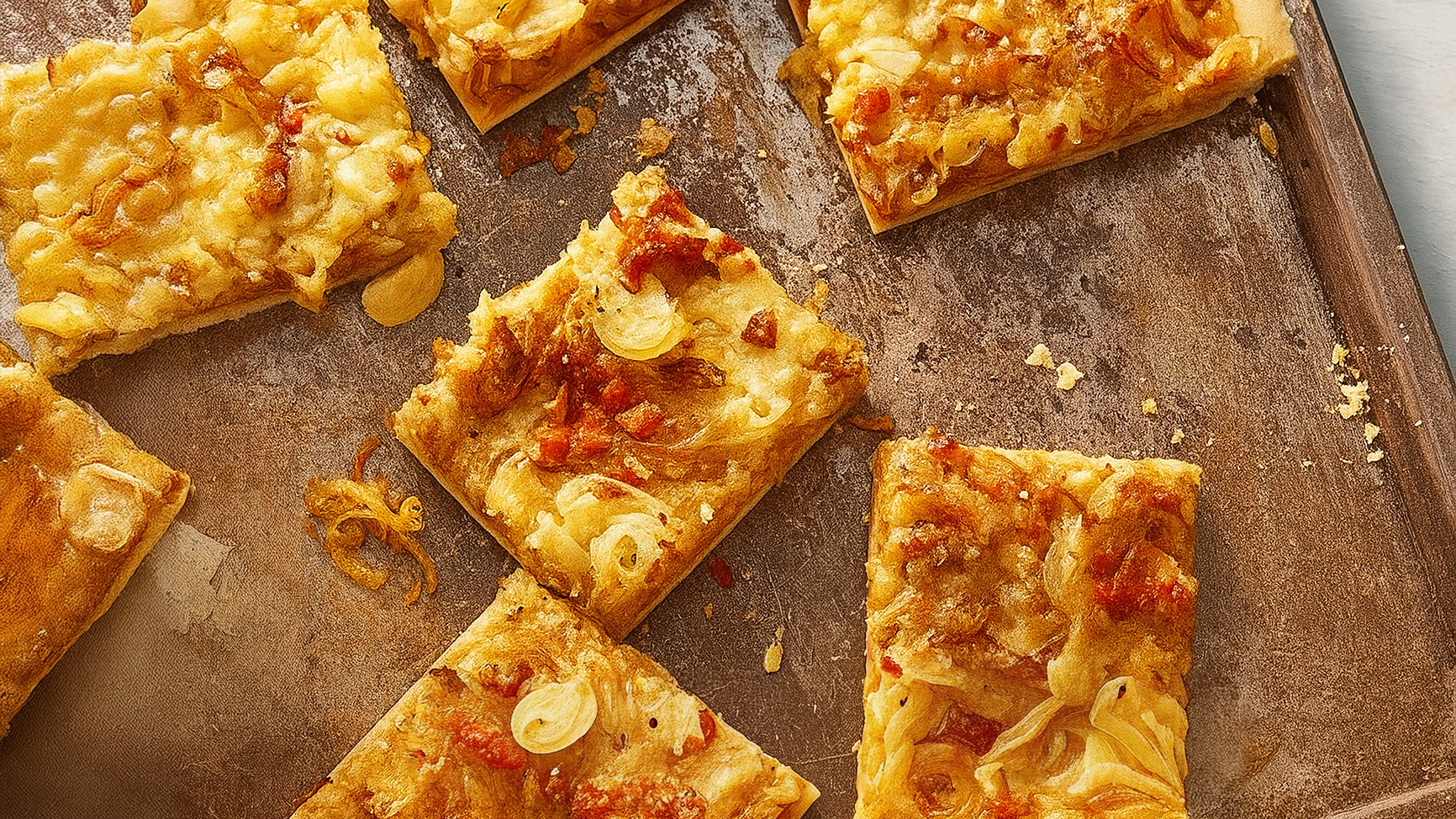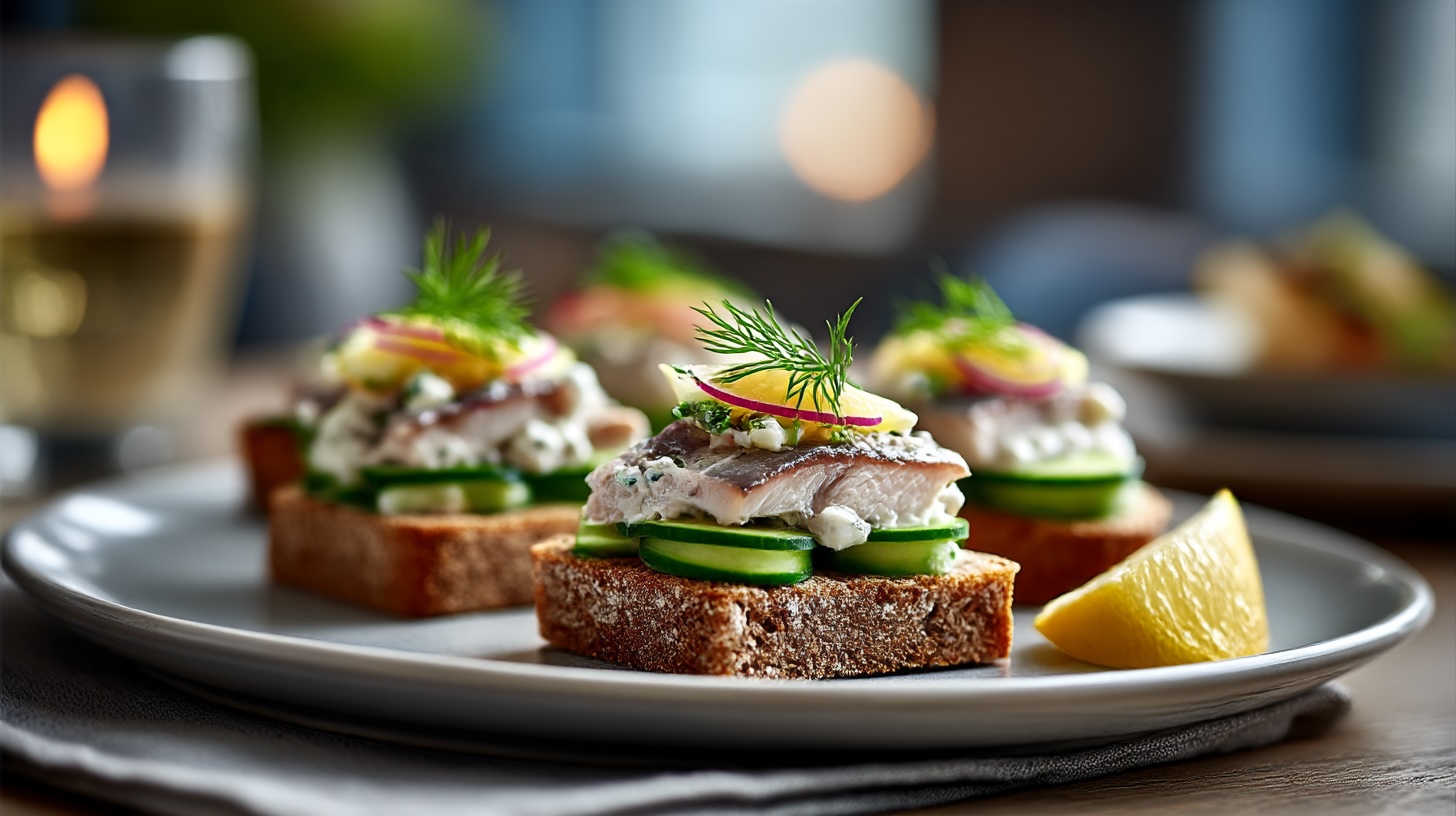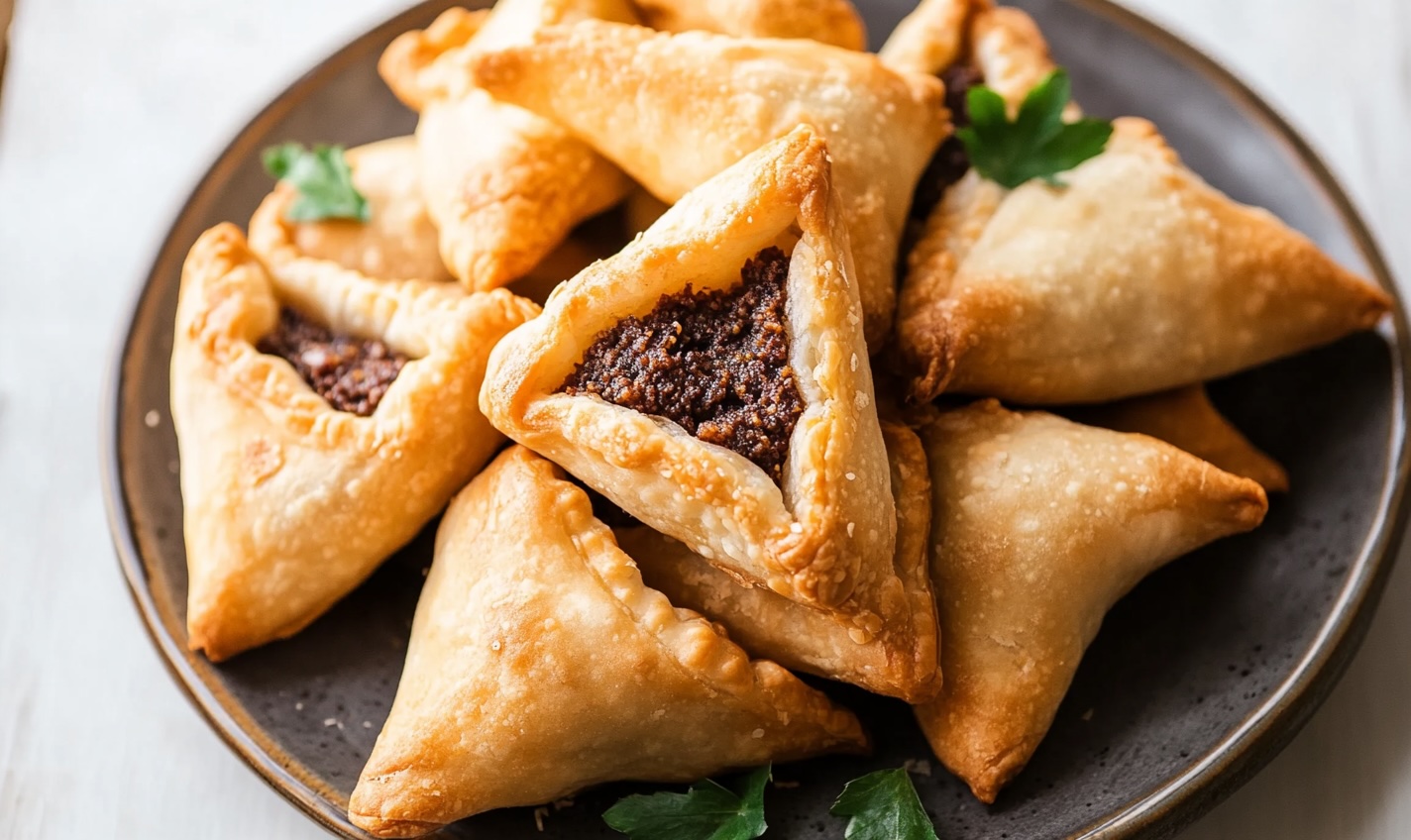Moo Sarong: A Culinary Treasure from Thailand
The Origins of Moo Sarong
Moo Sarong Pie, a delightful Thai pastry, boasts a rich history that intertwines with the cultural and culinary traditions of Thailand. Its origins can be traced back to the country’s storied past, where influences from various regions and ethnic groups shaped its development. The name “Moo Sarong” translates to “wrapped pork,” reflecting the primary ingredient that is complemented by a variety of herbs and spices typical in Thai cuisine. The dish has gained popularity for its unique combination of flavours, offering both savoury and aromatic elements that represent the essence of Thai cooking.
Initially, Moo Sarong was created as a street food delicacy, made primarily for outdoor consumption and often enjoyed during local festivals. The culinary art of making this pie draws from traditional cooking methods, emphasising the significance of fresh ingredients. The use of minced pork, mixed with various spices, contributes to the pie’s rich taste, while the dough is skillfully prepared to provide a perfect balance of texture. This dish is a prime example of how Thai pies encapsulate the flavours of the region, making it a staple in many households.
As Moo Sarong Pie gained traction, its preparation techniques evolved, incorporating influences from neighbouring countries. Variations of this pie began to appear, with some incorporating elements from other Southeast Asian cuisines, allowing for delightful experimentation with flavours and textures. The original preparation remains, however, ensuring that the essence of Moo Sarong is honoured. Its significance has grown beyond mere sustenance; it now represents a connection to cultural heritage and the communal enjoyment that food brings to various aspects of Thai life.
The History Behind the Recipe
The Moo Sarong Pie, with its delightful blend of flavours and textures, carries with it a rich history that reflects the cultural essence of Thailand. This savoury dish, primarily made from minced pork wrapped in a crispy, thin pastry, has been cherished for generations. The origins of Moo Sarong can be traced back to rural Thai communities where local ingredients were used to create hearty meals that sustained families through arduous days of labor.
As a beloved national dish, variations of Moo Sarong are found throughout the different regions of Thailand. Each area boasts its take on the recipe, incorporating regional spices or unique preparation methods, thus enhancing its cultural significance. For instance, in Northern Thailand, you may find Moo Sarong Pie infused with local herbs, while the Southern variant might showcase the spiciness characteristic of that region’s cuisine. These distinctions contribute to the mosaic of flavours that define Thai culinary traditions.
The impact of globalisation has introduced new ingredients and techniques that inevitably influence traditional recipes. However, Moo Sarong Pie has, in many ways, resisted complete alteration, largely due to its strong adherence to time-honored practices in Thai households. Cooks are often eager to pass down the family recipe, ensuring that the techniques, flavours, and values associated with the dish are preserved for future generations. This preservation of Moo Sarong, despite external influences, illustrates both the resilience of Thai culinary traditions and the dish’s status as a comforting symbol of home and family.
From festive gatherings to everyday meals, Moo Sarong Pie remains a staple, embodying the spirit of Thai hospitality and the deep-rooted connection to cultural heritage. These values continue to ensure its place in the hearts—and kitchens—of many, allowing it to flourish as a cherished aspect of Thai cuisine.
The Flavor Profile: What Makes Moo Sarong Unique
The Moo Sarong pie, a delectable Thai culinary creation, stands out for its harmonious blend of flavours and textures that evoke the richness of Thai cuisine. At the heart of this savoury pie is the spiced minced pork filling, which provides a robust and tantalising foundation. The primary ingredient, minced pork, is seasoned with an array of fragrant spices that elevate its taste. Among these, garlic plays a crucial role, offering a pungent aroma complemented by its subtle sweetness when cooked. Similarly, freshly cracked black pepper imparts a gentle spiciness, enhancing the overall flavor without overpowering the palate.
An essential herb in the Moo Sarong pie is cilantro, which adds a refreshing brightness and a slightly citrusy note. It not only contributes to the flavor complexity but also encapsulates the essence of Thai cooking, which often emphasises fresh and herbaceous ingredients. The combination of these spices and herbs creates a filling that is flavorful yet balanced, appealing to a wide range of taste preferences.
The pie itself is enveloped in a flaky pastry that serves as the canvas for this flavorful filling. The contrasting textures of the golden, crispy exterior and the tender, spiced minced pork within create an enjoyable eating experience. Each bite delivers a perfect fusion of crunch and tenderness, allowing the spices to meld beautifully. It is this distinctive texture that differentiates Moo Sarong from other variations, such as the Thai pork pie, which may possess a denser crust. Ultimately, the unique blend of spices along with the expertly crafted pastry makes Moo Sarong pie a sensational dish that is not only a feast for the taste buds but also a culinary delight steeped in Thai tradition.
Jokes and Fun Facts about Moo Sarong
When it comes to Moo Sarong Pie, humour and trivia often complement the savoury experience. Here’s a light-hearted look at this delectable dish, undeniably popular in Thai cuisine. Why did the Moo Sarong Pie break up with the Thai pork pie? Because it thought the Thai pie was too flaky! This pun underscores the playful relationships we often have with our favorite foods, especially when indulging in something as rich and satisfying as Moo Sarong.
In addition to jokes, the culinary history of Moo Sarong Pie provides a fascinating background. Did you know that this dish is a unique take on the traditional Thai pie? The Moo Sarong is actually made from marinated pork wrapped in thin layers of pastry, which is then deep-fried to crispy perfection. This method not only enhances the overall texture but also creates a delightful contrast between the crispy exterior and the tender, flavorful interior. It is said that the word ‘sarong’ refers to the way the pork is carefully wrapped, much like how the Thai traditional sarong, a garment, is worn.
Furthermore, Moo Sarong Pie gained recognition beyond local borders, resonating with food enthusiasts and gourmets around the world. Have you ever tried to guess the secret ingredient in a Moo Sarong? Some say it’s the blend of herbs and spices that makes the filling so irresistible—almost like magic! It’s a dish that truly brings people together, showcasing the heartwarming essence of Thai culinary traditions.
So, whether you’re savouring the crispy beauty of a Moo Sarong or sharing a laugh over a Thai pie joke, it’s clear that this dish is more than just a meal; it’s an experience brimming with culture and joy!
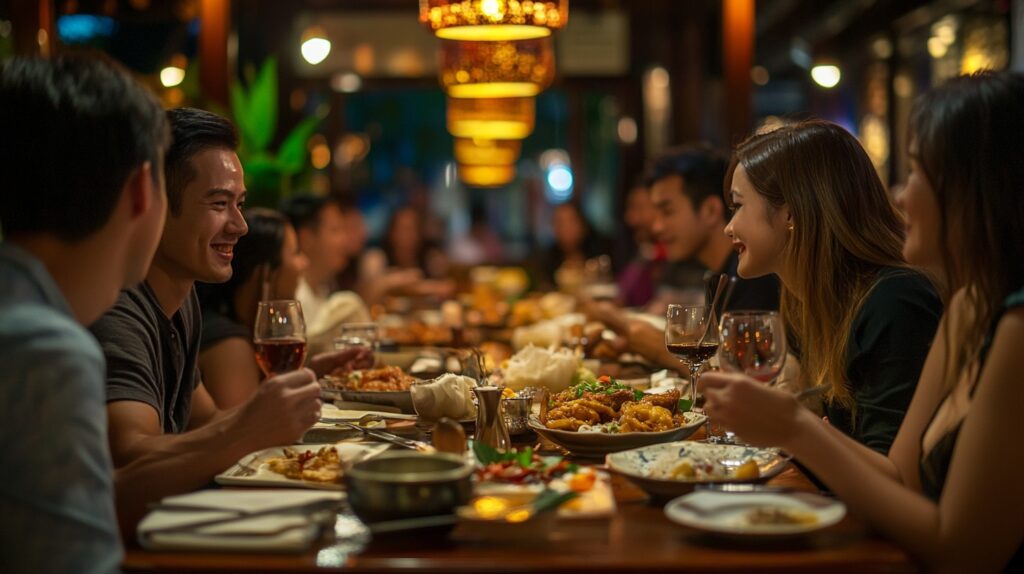
How to Make Moo Sarong at Home
Creating your own Moo Sarong Pie at home is an enjoyable and rewarding experience. To begin, gather the following ingredients: 500 grams of ground pork, 250 grams of thin rice noodles, 200 grams of your choice of vegetables (carrots, peas, or bell peppers), 2 tablespoons of fish sauce, 1 tablespoon of sugar, 1 teaspoon of salt, and 12 sheets of spring roll pastry. Additionally, prepare some oil for frying.
Start by cooking the rice noodles according to the package instructions. Once cooked, drain them and set aside. In a mixing bowl, combine the ground pork, cooked noodles, chopped vegetables, fish sauce, sugar, and salt. Mix these ingredients thoroughly to ensure even distribution of flavours.
Next, it is time to assemble the pies. Take one sheet of spring roll pastry and place a generous spoonful of the pork mixture at one end. Roll up the pastry tightly, tucking in the sides to seal the filling inside. Repeat this process until all the filling is used.
To achieve the perfect pastry, ensure that the oil is adequately heated before frying. Carefully place the Moo Sarong Pie rolls into the hot oil and fry them until they are golden brown and crispy. This usually takes about 3 to 4 minutes on each side. Once cooked, transfer them onto paper towels to absorb any excess oil.
For variations, you can customise the filling by swapping the pork for chicken or tofu, or adding herbs like cilantro or mint for extra flavour. Additionally, consider incorporating different dipping sauces, such as sweet chili or peanut sauce, to enhance your culinary experience.
In conclusion, making Moo Sarong Pie at home allows you to experiment with flavours and ingredients, creating a personalised dish that captures the essence of Thai cuisine. Enjoy the rich tastes and delightful textures of your homemade creation!
Where to Find the Best Moo Sarong in Thailand
When it comes to savouring the delectable moo sarong pie, Thailand is rich with options that ensure an authentic culinary experience. From bustling street stalls to renowned restaurants, the nation offers a range of establishments, each with unique specialties that cater to the diverse palate of both locals and tourists.
One of the must-visit locations is the historic district of Ayutthaya, where a small eatery named “Moo Sarong Master” serves an exquisite version of this savoury dish. This establishment prides itself on using fresh, locally sourced ingredients, allowing them to craft a rich and flavorful moo sarong pie that is deeply rooted in traditional Thai culinary techniques. Guests can enjoy the vibrant ambiance of the location, combined with local art and history, making it a memorable dining experience.
In Bangkok, the popular street vendor named “Thai Pie Street” has gained acclaim for its ooey-gooey consistency and carefully balanced flavours in their moo sarong pie. This bustling vendor draws long lines of food enthusiasts nightly, each eager to indulge in the perfect blend of Thai spices and tender pork. The atmosphere is lively, and the experience of enjoying food amidst the vibrant streets of Bangkok is unparalleled. For a more refined setting, “Baan Thai Restaurant” in Chiang Mai offers a gourmet moo sarong pie accompanied by exquisite side dishes. The restaurant not only highlights the flavours of Thai pork pie but also provides a tranquil dining environment often enhanced by traditional dance performances.
In conclusion, whether you find yourself in a quaint diner in Ayutthaya or a lively street food market in Bangkok, Thailand is a treasure trove of places that serve the iconic moo sarong pie. Each location promises a unique interpretation of this beloved dish, ensuring that every bite encapsulates the rich essence of Thailand’s culinary heritage.
The Cultural Significance of Moo Sarong
Moo Sarong Pie, a savoury delight from Thailand, embodies much more than just a culinary creation; it serves as a cultural emblem that reflects the heart and hospitality of Thai society. Within the realm of Thai cuisine, this dish holds a special place as it is frequently featured during significant gatherings and festive occasions, demonstrating its importance not only as a food item but as a symbol of community and togetherness.
The preparation and sharing of Moo Sarong are integral to Thai culinary traditions, illustrating a spirit of generosity and warmth. Families often gather to make this delectable Thai pork pie, where each ingredient symbolises different wishes and aspects of life. The bounteous nature of the dish aligns with the cultural beliefs surrounding food as a means of bringing people closer, reinforcing bonds among family and friends.
Moo Sarong Pie is traditionally served during celebrations such as weddings, festivals, and various religious ceremonies. Its presence at these events underscores its role in nurturing social ties, as guests are treated to this delicious treat, which signifies abundance and goodwill. The act of serving Moo Sarong to visitors is not merely an offering of food; it is an expression of friendship and hospitality that is deeply rooted in the Thai way of life.
Moreover, culinary practices involving Moo Sarong reflect the broader tapestry of Thai food culture, where the fusion of flavours and unique preparations highlight regional diversity. The artistry of making Thai pie not only showcases culinary skills but also cultural heritage, as recipes are often passed down through generations. Thus, Moo Sarong Pie encapsulates a rich tradition that continues to thrive in contemporary Thailand, preserving its essence as a symbol of hospitality and conviviality.
Pairing Moo Sarong: Suggested Beverages and Sides
Pairing the delightful moo sarong pie with the right beverages and side dishes can significantly enhance the overall dining experience. The distinct flavours of the pie, which features tender pork enveloped in a delicious, flaky crust, offer many opportunities for complementary pairings, particularly those that highlight traditional Thai cuisine.
To start, consider the refreshing taste of traditional Thai iced tea. Its sweet and creamy profile provides a perfect contrast to the savoury notes of the moo sarong pie. Another excellent choice is a glass of coconut water, which not only serves to cleanse the palate but also adds a hint of sweetness that harmonises with the pie’s spices. For those preferring alcoholic options, a light Thai beer like Singha or a crisp lager can effectively balance the richness of the dish.
When it comes to side dishes, a classic Thai papaya salad, known as som tam, offers a tantalising mix of spicy, sour, and sweet flavours that can brighten the meal. This salad, made with green papaya, tomatoes, lime, and peanuts, creates a refreshing accompaniment to the heavy yet tasteful filling of the moo sarong pie. Additionally, serving a simple cucumber salad can provide a satisfying crunch while helping to cut through the richness of the pie.
Moreover, sauces such as a spicy chili dip or a sweet and tangy sauce can elevate the dining experience further. These sauces not only add depth of flavor but also allow diners to customise each bite according to their taste preferences. Combining these beverages and side dishes with moo sarong pie will help highlight its unique flavours, making for a memorable Thai culinary experience.
Adventures in Tasting: Personal Stories from Food Lovers
The journey of discovering moo sarong pie—a dish that encapsulates the essence of Thai cuisine—has been a delightful adventure for many food lovers. One particular enthusiast, Susan, recalls her first encounter with this savoury pie during a family gathering in Thailand. The aroma that wafted through the air was irresistible, and the moment she took her first bite, she was transported into a world of flavor. The marinated pork, wrapped in a delicate, flaky crust, combined with hints of Thai herbs and spices left her craving for more. “It was unlike anything I had ever tasted,” she reflects, emphasising how the moo sarong pie connected her with the culinary tradition of Thailand.
Another food lover, Mark, shares a different perspective, recalling his experience at a vibrant street market in Chiang Mai. He was drawn to a vendor showcasing an array of delicious snacks. After sampling various dishes, he settled on the moo sarong pie, intrigued by its unique presentation. The vendor’s passionate explanation of the dish’s ingredients and cooking method only heightened his taste experience. As Mark savoured the flaky pastry and spiced pork, he felt a genuine connection to the local culture. “It was a celebration of flavours, and I enjoyed every bite,” he states, reinforcing the idea that food is not just sustenance, but also a reflection of community and heritage.
Finally, Lisa, who took a Thai cooking class, fondly recalls preparing moo sarong pie with her instructor. Learning to craft the tender crust and combine the rich stuffing allowed her to appreciate the intricacies of the dish further. “Recreating it at home has become a special ritual in my family,” she notes with a smile, emphasising how this savoury pie has not only filled her stomach but also her heart with warmth and cherished memories. The moo sarong, along with stories like these, illustrates the profound impact that culinary experiences can have on people’s lives.
5 Moo Sarong Recipes
Moo Sarong, a traditional Thai snack, features minced pork wrapped in a delicate web of noodles and deep-fried to golden perfection. Here are five variations of the recipe to suit different tastes and styles:
1. Classic Moo Sarong
Ingredients:
- 300g minced pork
- 1 tbsp soy sauce
- 1 tbsp oyster sauce
- 1 tsp white pepper
- 1 tsp sugar
- 1 egg (beaten for sealing)
- 1 pack of thin rice noodles (soaked until soft)
- Oil (for frying)
Method:
- Mix pork with soy sauce, oyster sauce, white pepper, and sugar. Let marinate for 20 minutes.
- Form small pork balls (about 1 inch in diameter).
- Wrap each pork ball with soaked rice noodles, securing the ends with egg wash.
- Heat oil in a pan to 180°C (350°F) and deep-fry the balls until golden brown.
- Serve with sweet chilli sauce or plum sauce.
2. Moo Sarong with Herbal Twist
Ingredients:
- Classic ingredients (above)
- 1 tbsp finely chopped kaffir lime leaves
- 1 tbsp minced lemongrass
Method:
- Add kaffir lime leaves and lemongrass to the pork mixture.
- Follow the same steps for wrapping and frying.
- Garnish with extra lime leaves for an aromatic finish.
3. Spicy Moo Sarong
Ingredients:
- Classic ingredients
- 1 tbsp red curry paste
- 1 tbsp chopped coriander
Method:
- Mix red curry paste and coriander into the pork before forming balls.
- Wrap with noodles and deep-fry as usual.
- Serve with a tangy tamarind dipping sauce for an added kick.
4. Moo Sarong with Prawn
Ingredients:
- 150g minced pork
- 150g minced prawn
- 1 tbsp fish sauce
- 1 tsp sesame oil
- Rice noodles
Method:
- Combine pork, prawn, fish sauce, and sesame oil. Mix well.
- Form and wrap balls with noodles.
- Fry until golden, ensuring the prawn is cooked through.
- Serve with spicy seafood dipping sauce.
5. Vegetarian Sarong Balls (Inspired by Moo Sarong)
Ingredients:
- 300g minced tofu or plant-based mince
- 1 tbsp soy sauce
- 1 tsp garlic powder
- 1 tsp white pepper
- 1 egg or vegan egg substitute (for sealing)
- Rice noodles
Method:
- Mix tofu or plant-based mince with seasonings.
- Form into balls, wrap with noodles, and fry until crispy.
- Pair with sweet chilli or peanut sauce.
Each variation offers a unique take on this delightful dish, making it versatile for different occasions. Perfect as party snacks or appetisers!
